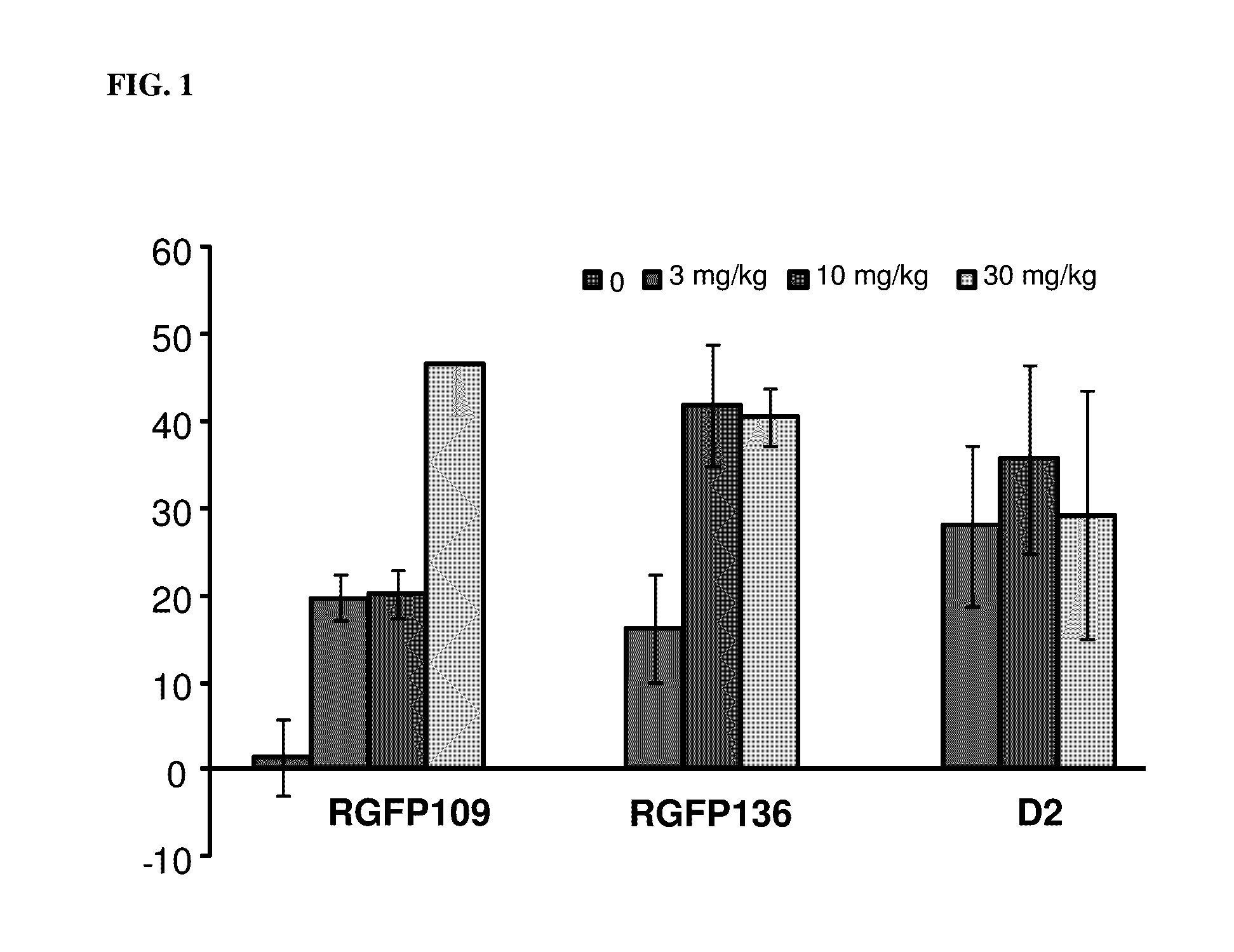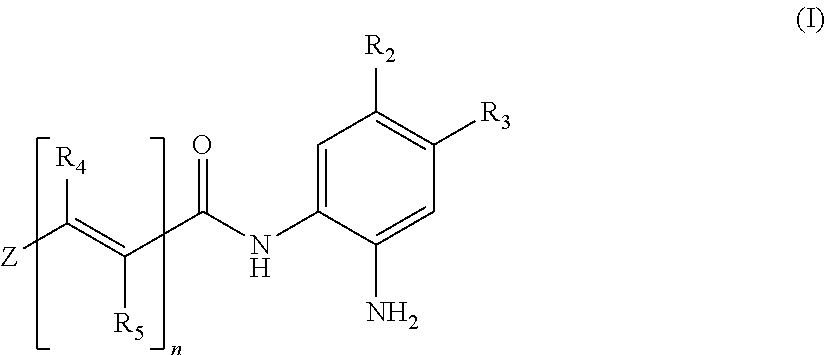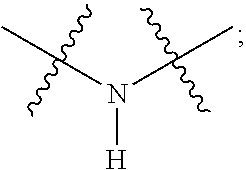Histone deacetylase inhibitors
- Summary
- Abstract
- Description
- Claims
- Application Information
AI Technical Summary
Benefits of technology
Problems solved by technology
Method used
Image
Examples
example 1
hydrochloride salt of (E)-N-(2-aminophenyl)-3-(imidazo[1,2-a]pyridin-3-yl)acrylamide A6
[0396]
(E)-ethyl 3-(imidazo[1,2-a]pyridin-3-yl)acrylate
[0397](Ethoxycarbonylmethylene)triphenylphosphorane (0.72 g, 2.05 mmol) was added to a solution of imidazo[1,2-a]pyridine-3-carbaldehyde (0.25 g, 1.71 mmol) in anhydrous tetrahydrofuran (THF) (20 mL) at room temperature. The reaction mixture was heated overnight at 65° C. After completion of the reaction as indicated by HPLC, the reaction mixture was diluted with ethyl acetate (EtOAc) (20 mL) and quenched with a saturated solution of ammonium chloride (10 mL). The organic layer was washed with water (3×20 mL) and brine (15 mL). It was dried over anhydrous Na2SO4, filtered and evaporated to get the crude product. This crude was purified by silica gel column chromatography using 50-80% EtOAc in Hexanes to provide pure (E)-ethyl 3-(imidazo[1,2-a]pyridin-3-yl)acrylate (0.19 g) as a white solid. ES+ (M+H)+ 217.
(E)-3-(imidazo[1,2-a]pyridin-3-yl)acryl...
example 2
Advanced Intermediate (E)-tert-butyl (2-(3-(1H-pyrazol-4-yl)acrylamido)phenyl)carbamate
[0404]
tert-butyl (2-(2-(diethoxyphosphoryl)acetamido)phenyl)carbamate
[0405]DIPEA (5.16 g, 6.90 mL, 40 mmol) and tert-butyl 2-aminophenylcarbamate (2.08g, 10 mmol) were added to a solution of 2-(diethoxyphosphoryl)acetic acid (2.15g, 11 mmol) in DCM (120 mL). After the mixture was stirred for ten minutes, HATU (4.56 g, 12 mmol) was added to the reaction and stirring was prolonged for 6 h at room temperature under a nitrogen atmosphere. After completion of the reaction as indicated by HPLC, the reaction mixture was washed with saturated NaHCO3 and brine. It was dried over Na2SO4 and filtered. The filtrate was evaporated in vacuo to get the crude product, which was triturated with 30% v / v hexanes in EtOAc for 30 min. The solid was filtered, washed with 30% hexanes in EtOAc and dried to get 2.92g of tert-butyl (2-(2-(diethoxyphosphoryl)acetamido)phenyl)carbamate as an off-white solid in 76% yield. 1HN...
example 3
hydrochloride salt of (E)-N-(2-aminophenyl)-3-(1-(2-(3-chloro-5-fluorophenoxy)ethyl)-1H-pyrazol-4-yl)acrylamide B5
[0407]
(E)-tert-butyl (2-(3-(1-(2(3-chloro-5-fluorophenoxy)ethyl)-1H-pyrazol-4-yl)acrylamido)phenyl)carbamate
[0408]Cesium carbonate (98 mg, 0.30 mmol) was added to a solution of (E)-tert-butyl (2-(3-(1H-pyrazol-4-yl)acrylamido)phenyl)carbamate (100 mg, 0.30 mmol) in anhydrous DMF (4 mL). A solution of 1-(2-bromoethoxy)-3-chloro-5-fluorobenzene (76 mg, 0.30 mmol) in DMF (1 mL) was then added and the reaction mixture was stirred overnight at room temperature under a nitrogen atmosphere. It was diluted with EtOAc (30 mL) and washed with water (2×40 mL) and brine (10 mL). The organic layer was dried over anhydrous Na2SO4 and filtered. The evaporated crude was purified by silica gel column chromatography using a gradient of 0-100% of EtOAc in hexanes to provide 144 mg of (E)-tert-butyl (2-(3-(1-(2-(3-chloro-5-fluorophenoxy)ethyl)-1H-pyrazol-4-yl)acrylamido)phenyl)carbamate as ...
PUM
 Login to View More
Login to View More Abstract
Description
Claims
Application Information
 Login to View More
Login to View More - R&D
- Intellectual Property
- Life Sciences
- Materials
- Tech Scout
- Unparalleled Data Quality
- Higher Quality Content
- 60% Fewer Hallucinations
Browse by: Latest US Patents, China's latest patents, Technical Efficacy Thesaurus, Application Domain, Technology Topic, Popular Technical Reports.
© 2025 PatSnap. All rights reserved.Legal|Privacy policy|Modern Slavery Act Transparency Statement|Sitemap|About US| Contact US: help@patsnap.com



